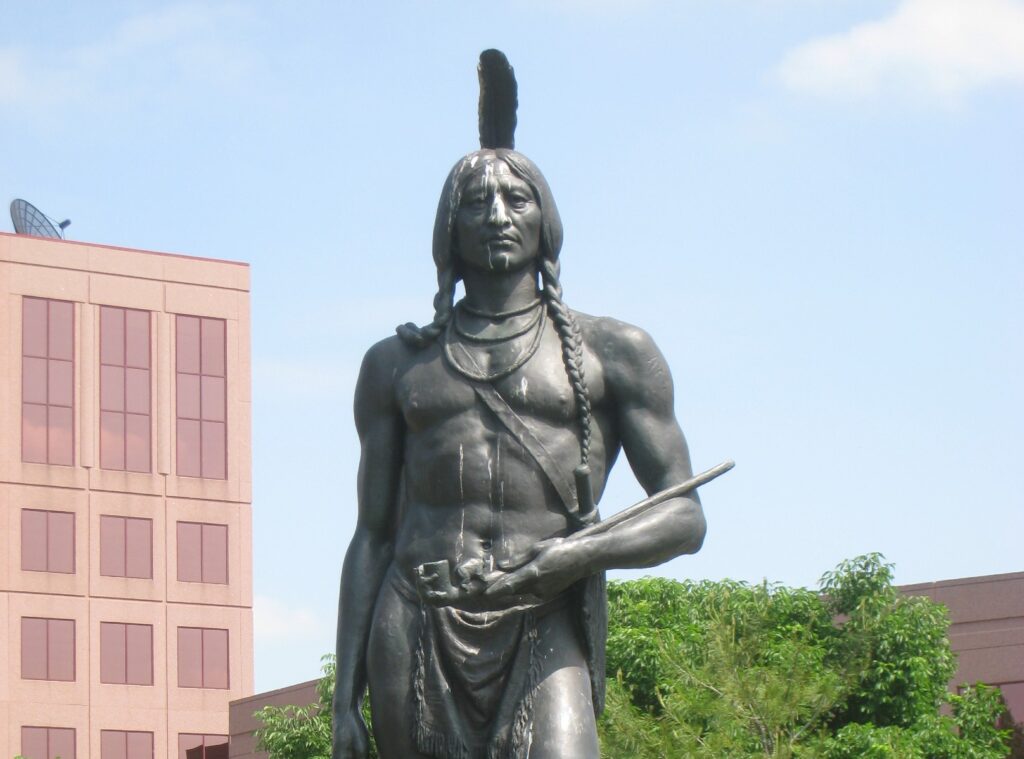Turkey. It’s one of the most well-known symbols when thinking of Thanksgiving: turkey decor in the home, turkey on the table, turkey pardons with presidents and loads of turkeys on sale in grocery stores. Historically, though, when English colonists (Pilgrims) were looking for food, their “fowling” goal may have been more focused on geese and ducks. And when approximately 90 Wampanoag natives showed up to a gate where the 50 Pilgrims were in the 1600s, the groups later shared a meal full of venison, fish, eels, shellfish, stews, vegetables and beer.

They weren’t sitting at a table in the way some animated films and cartoons depict them. Britannica confirms that they were sitting on the ground outside, propped up on barrels with food on their laps, while others were off firing guns, running races and drinking liquor. It was more like a picnic than a long table in a dining room. Minus the guns, unless you come from a household that speaks about the Second Amendment freely, the meal differences are one of many kid-friendly details to speak to your kids about regarding Thanksgiving. And if your kids start looking in the seafood aisle while you’re searching for cranberry sauce and dry cornbread mix for Thanksgiving dinner, don’t be surprised.
7 Kid-Friendly Thanksgiving Lessons
There are some tough parts of American history when it comes to how natives were treated by the Pilgrims. If you’re in a household where you believe in giving your kids “The Talk” early on and leave the news on all day, chances are you wouldn’t have a problem with speaking about how the Indian Wars resulted in 15 million natives declining to 238,000 natives. But if you’re a parent who wants to let your “kid be a kid” and would rather not give too much truth too early, here are a few history lessons for talking to elementary-aged kids about Thanksgiving without lying to them.
Who Were the Wampanoag?
The Mashpee Wampanoag Tribe were known as the People of the First. These were natives who spoke Algonquian, and used to live on what we now know as Rhode Island and Massachusetts. Corn (commonly called maize) was one of their main meals, along with fish and wild animals they hunted. The tribe included local chiefs, or a sachem, and comprised several villages.

What Was the Massasoit Peace Treaty?
In 1621, the Wampanoag high chief, Massasoit, made a peace treaty called the Massasoit Peace Treaty with the Pilgrims, who had landed in the tribe’s territory. The treaty ensured that the Pilgrims and the Wampanoag would not injure each other. If such a thing occurred the leader of one group would let the other group punish the perpetrator. The treaty also stated that the two parties wouldn’t steal from each other, and that they would aid each other in conflicts when needed.
Why Did the Pilgrims Come To America?
Pilgrim men, settlers of the Plymouth Colony, came to the coast of Massachusetts on the Mayflower ship in November of 1620 CE with women and children. Although Chief Massasoit instructed his powwows (shaman, which is a religious healer) to summon the spirits to make the Pilgrims leave, when this did not happen, he tried to make peace with them. And by a number of people within his tribe dying of disease, he wondered if creating a bigger alliance would help him regain his own power.
Did the Pilgrims Want To Be Friends With the Natives?
Their goals were a little different. They initially wanted peace to avoid anybody being mean to each other or hurting each other. Additionally, they assumed profitable trading of goods to live better and pay back the people who paid for them to travel to North America, where the natives already lived.
Do We Know any Wampanoag People?
A lot of the tribe lives in Massachusetts. In 2007, the federal government re-acknowledged the Mashpee Wampanoag as a tribe. In 2015, the federal government declared 150 acres of land in Mashpee and 170 acres of land in Taunton for their reservation. The Mashpee tribe currently has about 3,200 enrolled citizens.
If They Didn’t Eat Turkey, Why Do We Eat Turkey On Thanksgiving?
In the 19th century, turkey became popular. There were at least 10 million turkeys in America when Europeans came. Second, people had turkeys on their farms, along with cows and chickens, to help feed their families.
Did They Say “Thank You” On Thanksgiving Or Prayers?
The Pilgrims didn’t have a history of public prayer. But a couple of years after they met the Chief, in 1623, they held another day of Thanksgiving. That year, a drought was destroying their crops. They prayed and fasted for relief. A few days later, rain finally came. Then, a captain named Miles Standish arrived with news that a Dutch supply ship was on its way. After that, Thanksgiving Day became a combination of a religious and social celebration for the Pilgrims.
